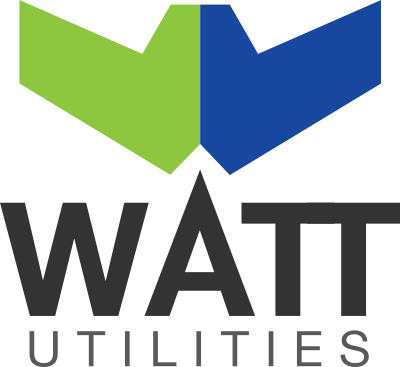Australia’s wholesale energy market faced notable changes in the third quarter of 2024 (Quarter ending September 30th 2024), reflecting the ongoing evolution in energy supply and demand dynamics. As renewable generation increases and the country moves toward its net-zero emissions target, these market shifts provide valuable insights into pricing, generation patterns, and system reliability.
Here, we summarise the main takeaways from the Australian Energy Regulator’s (AER) recent quarterly report and discuss what they mean for businesses navigating the wholesale energy landscape. Here’s the actual report link: https://www.aer.gov.au/system/files/2024-10/Q3%202024%20Wholesale%20markets%20quarterly%20report_1.pdf
Q3 2024 in the Wholesale Energy Market Update
Renewable Energy Gains Ground
- Renewable energy sources like solar and wind contributed significantly to Australia’s energy mix, covering much of the increased demand. The shift has helped to reduce reliance on coal and gas, though these still play a role in meeting peak demand and ensuring grid stability.
- In Q3 2024, renewables covered over half of total generation at certain times, marking a step towards Australia’s clean energy goals.
Wholesale Price Trends
- Average wholesale electricity prices saw fluctuations due to changes in generation mix and varying demand patterns.
- Prices were relatively stable during periods of high renewable generation, but rose during high demand, highlighting the importance of energy storage and flexibility in a renewable-dominated grid.
Gas Market Adjustments
- Gas prices adjusted due to lower demand for gas-fired generation, as renewables continued to dominate. However, gas still played a role in balancing the grid, especially during peak periods or when renewable output was low.
- For businesses, these price trends underscore the importance of exploring alternative energy solutions, as gas prices could continue to be variable with the expansion of renewables.
Demand Patterns and System Reliability
- Australia’s overall electricity demand remained steady, with variations driven largely by temperature fluctuations and industrial activities.
- With the rapid growth of renewable energy sources, system operators are paying closer attention to reliability challenges. The AER highlighted the importance of demand response programs and battery storage solutions to ensure grid stability during peak times.
Key Takeaways from the AER’s Q3 2024 Wholesale Markets Quarterly Report
Electricity Prices:
- Prices saw stabilisation throughout Q3 2024, largely due to increased renewable generation and consistent output.
- Wholesale prices were lower in periods of high renewable output but surged during peak demand when gas-fired generation was required to maintain grid stability.
Gas Prices:
- Gas prices displayed variability driven by demand shifts. Increased renewable reliance meant gas was mainly reserved for peak periods.
- Some stability was observed, though gas prices were higher during extreme weather events or when renewable generation fluctuated, impacting electricity prices.
Impact of Renewable Energy:
- The presence of renewable sources, such as solar and wind, helped mitigate some upward pressure on prices, highlighting the economic benefits of renewable integration.
- The volatility in fossil fuel prices, however, underscores the importance of continued investment in flexible energy storage solutions and demand response solutions to smooth out price fluctuations.
- Renewable sources contributed significantly to the energy supply, helping to reduce reliance on coal and gas during high-demand periods.
System Demand and Reliability
- Demand was steady, with peaks mostly driven by weather and industrial activity.
- Reliability challenges arose, especially during renewable fluctuations, prompting demand-response programs.
Gas Market and Energy Security
- Gas remained essential during low-renewable periods, balancing the grid as a reliable backup source.
- Plans for gradual gas transition continue, though challenges in storage and infrastructure adaptation remain.
Future Focus
- The report emphasises advancing demand response, supporting grid modernization, and expanding energy storage.
- Continued renewable growth is anticipated, with efforts aimed at reducing dependency on gas and bolstering system resilience.
- These trends reflect Australia’s ongoing shift toward a cleaner energy future while navigating reliability and cost challenges.
What These Trends Mean for Australian Businesses
As Australia’s energy market shifts towards renewables, businesses have new opportunities to save on energy costs while supporting sustainability goals.
Smart strategies for companies navigating this changing landscape
Monitor Wholesale Prices
Staying updated on wholesale price trends helps businesses make informed decisions about energy procurement and cost management. Our energy managers are a great resource of information around energy wholesale pricing; reach out to our team for a confidential conversation.
Consider Renewable Solutions
Integrating renewables, such as solar, or investing in energy-efficient practices can provide long-term savings and reduce exposure to fluctuating gas prices.
Engage in Demand Response Programs
Demand response initiatives are becoming crucial in balancing the grid, especially as renewables increase. Participating in these programs can help your business earn incentives while managing peak demand more efficiently. Check out our article on VPP’s (virtual power plants) here.
Final Thoughts
The trends in Australia’s wholesale energy market reflect a broader shift towards renewable energy sources. Businesses that stay informed and adapt to these changes can reduce costs and align with the country’s sustainability goals. For guidance on optimising your energy use in a changing market, Watt Utilities is here to support you every step of the way. Visit our homepage to learn more about our services.




